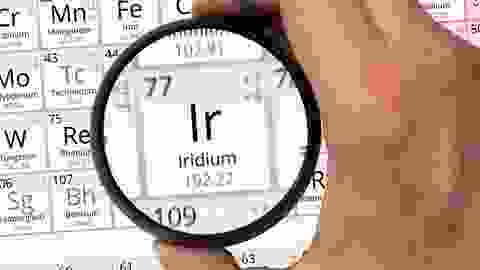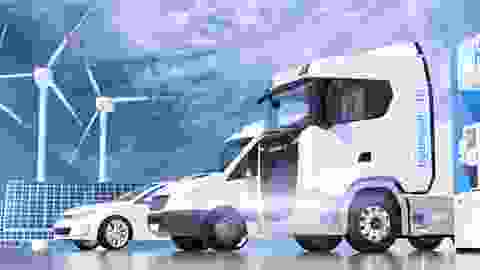Fuel cells to beat climate change
Industry and transport
An introduction to fuel cells
Facilitating the energy transition with hydrogen
Fuel cells and hydrogen can be used to power anything that needs electricity across transport and industry sectors. Fuel cells are an energy-smart technology that can pair with sources of renewable energy (wind, solar) to make a clean energy world, efficiently converting chemical energy to electrical energy by reacting fuel with oxygen. They have no moving parts, are quiet to run and are easy to maintain. Hydrogen can be stored to reproduce electricity when necessary.
There is a global shift from carbon (fossil fuels) to a hydrogen economy. Macro trends are converging. There is a mandate to address climate change owing to large-scale urbanisation, continued build-out of mass urban transportation and worsening air quality. Fuel cells offer energy-efficient transport, with potentially very low well-to-wheel CO2 emissions, depending on how the hydrogen is produced.
Hydrogen is a versatile energy carrier with no pollutant or greenhouse gas emissions at the point of use and it can play an important role in the transition to a clean, low-carbon energy system. Hydrogen contains no carbon but can have a substantial carbon footprint, depending on how it is produced. Hydrogen is mainly produced from natural gas, naphtha and other fossil fuels by several well-established industrial processes. Steam reforming is the current main route to hydrogen production. Integrating renewable energy with hydrogen production will be key.
PGMs and fuel cell technologies
Demand for fuel cells is growing rapidly in the developed world. Fuel cells offer new end-uses for platinum group metals (PGMs). Platinum catalysts are a key component of some types of fuel cell, outperforming base metals on activity, selectivity and stability. Ruthenium is also used. In the transport sector, it is not just replacing PGMs in familiar autocatalyst markets, the market is growing to adopt platinum catalysts in fuel cell trains, planes and boats, so the chances are that wherever the journey and whatever the means of travel, it will be facilitated by PGMs.
Several fuel cell technologies are likely to co-exist for different applications, and PGMs are key in three of the leading technologies. The six technologies distinguished by electrolyte are:
-
PEMFC – Proton exchange membrane fuel cell (platinum catalyst) for transport, aviation and marine environments.
-
PAFC – Phosphoric acid fuel cell (platinum catalyst) for portable power products.
-
DMFC – Direct methanol fuel cell (platinum and ruthenium catalyst) for stationary power.
-
SOFC – Solid oxide fuel cell.
-
MCFC – Molten carbonate fuel cell.
-
AFC – Alkaline fuel cell.

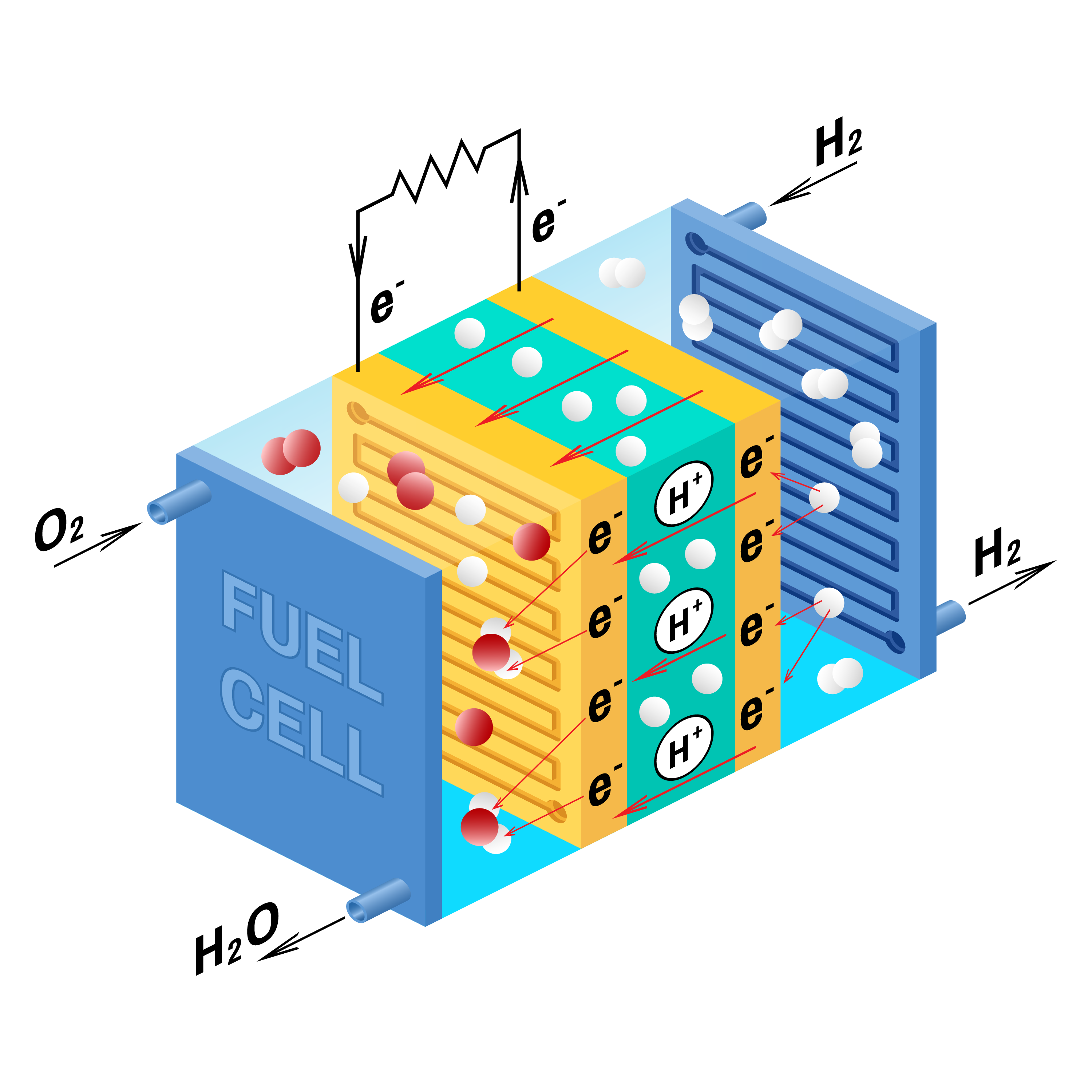
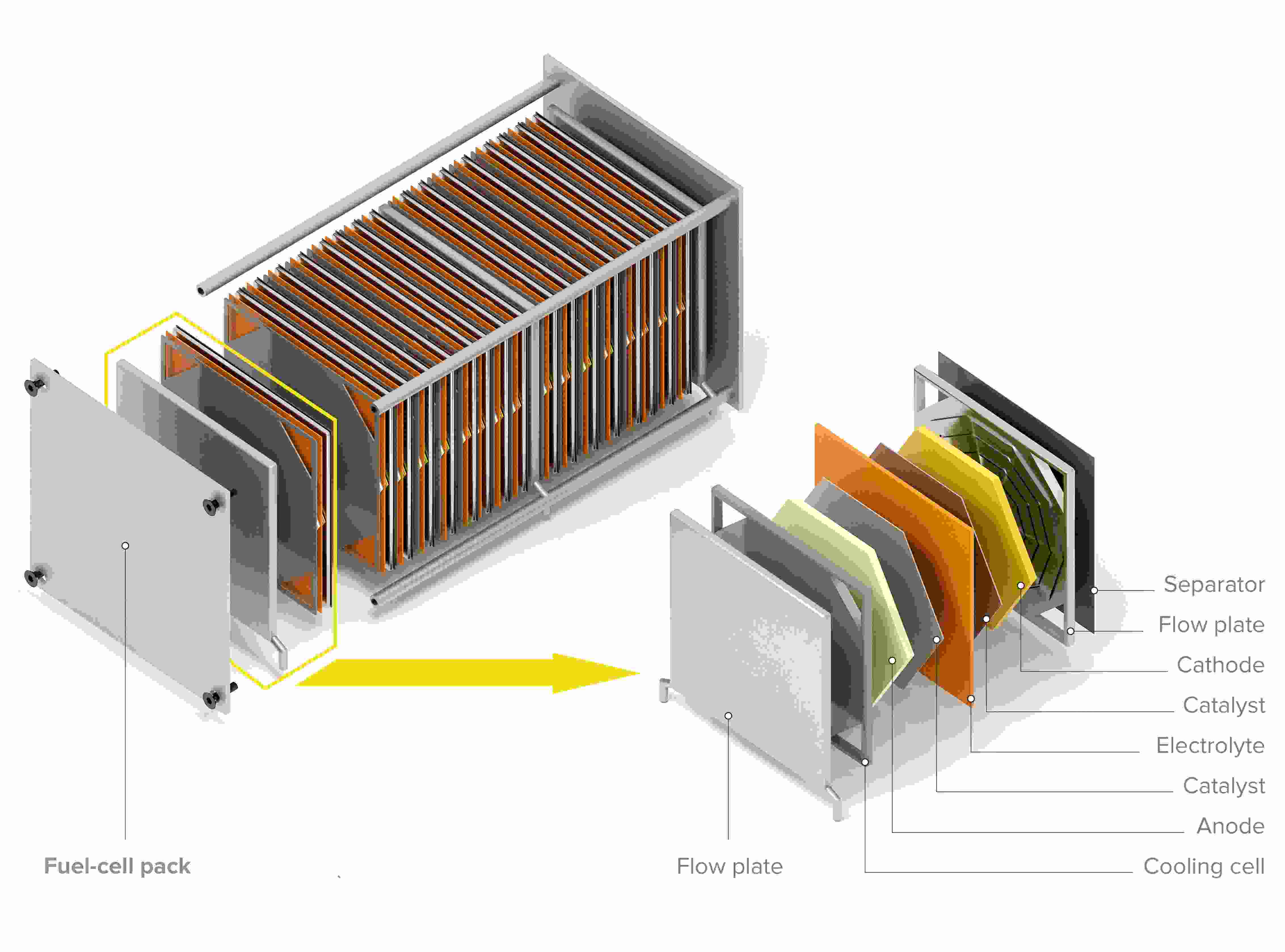
Fuel cells in transport
Transport demand for platinum in transport fuel cells is driven by emissions legislation imperatives.
Hydrogen enables various types of fuel cell electric vehicle (FCEV) to be refuelled rapidly and travel the desired range without emitting COX, SOX, NOX, particulates or noise.
FCEVs currently use 3-10x the platinum of internal combustion engine (ICE) vehicles and they will increase demand for platinum and ruthenium to counter slowing ICE vehicle sales. The most optimistic future projections from manufacturers predict FCEV PGM utilisation on par with ICE vehicles. At scale, fuel cell vehicles are cheaper to run than battery-electric options as hydrogen infrastructure is more cost-effective at scale.
FCEV roll-out is being led by heavy-duty vehicles (HDVs), with the expectation that powertrain cost reductions and improvements in hydrogen production, storage and distribution will then translate to light-duty vehicles (LDVs), lowering CO2 emissions, reducing particulates and nitrous oxides, and improving access to cities. Fuel cell transport offers a range of advantages:
-
Greater range and less charging (fuelling) time than battery-electric trucks.
-
Vehicle weight and load-carrying capacity are comparable to a conventional vehicle.
-
Fuel cell buses and trucks boast an efficiency 2-3x greater than their diesel counterparts. Fuel cell buses are becoming more established in cities, yielding lower emissions but offering the same convenience as diesel engines. Fuel cell trucks typically run on more limited, defined routes than cars so can rely on fewer fuelling stations.
-
Trains decarbonise more conveniently than electrification. Hydrogen is cheaper and more practical than mass line electrification and cleaner and quieter than diesel. However, as with cars, refuelling infrastructure could be costly for train operators, so uptake is slow.
-
Fuel cell ships lower emissions, especially when operating in environmentally sensitive areas.
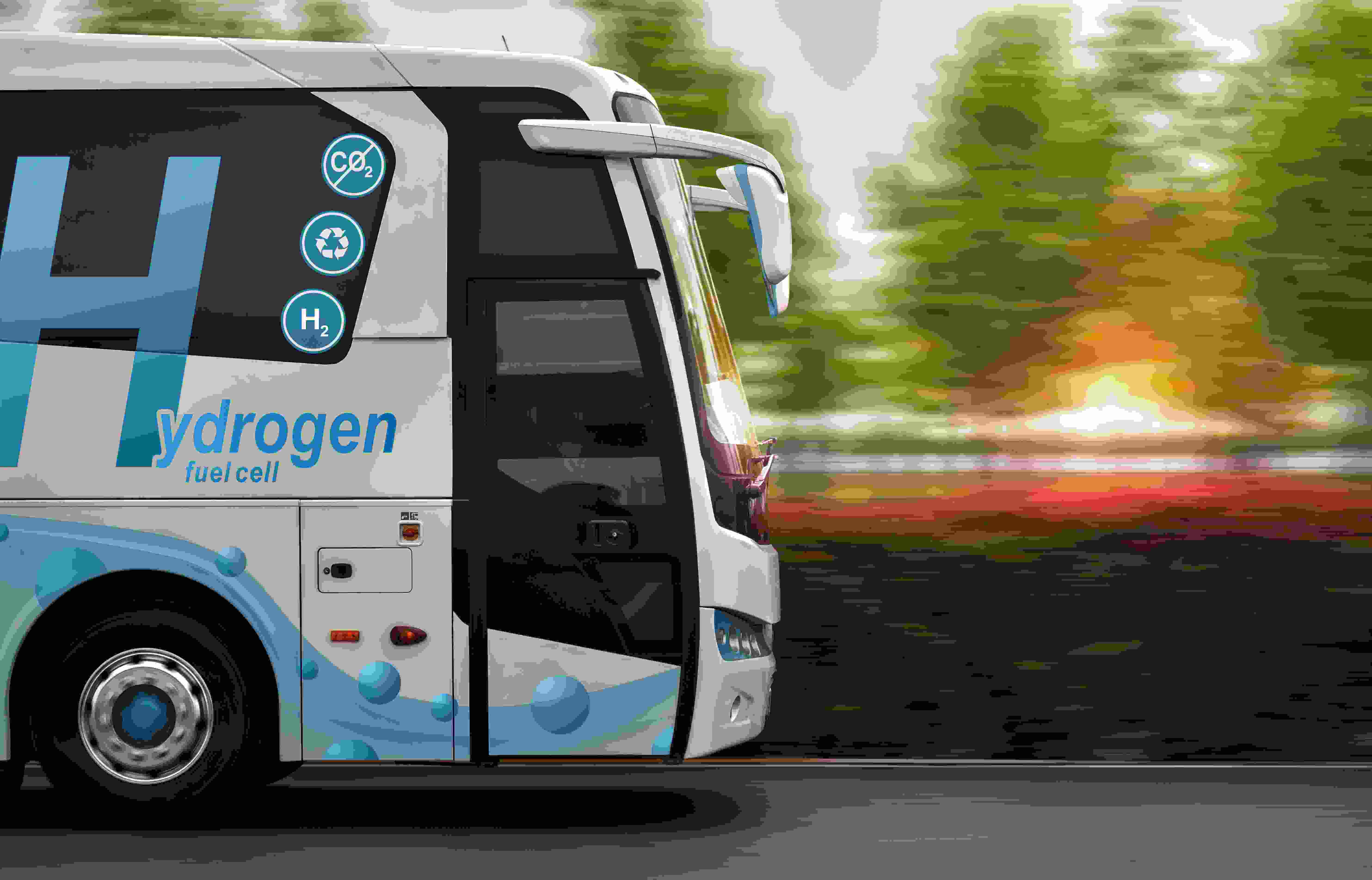

Hydrogen refuelling
The next decade requires setting up the infrastructure, scaling up manufacturing and bringing down costs, and a great deal of work is required to make the most efficient use of the platinum and ruthenium in the fuel cell catalyst.
FCEVs have already seen good penetration in industrial sectors. Owing to strict indoor warehouse emissions laws, materials handling equipment (e.g. forklifts) is well-suited to hydrogen. Fuel cell buses are also gaining traction following growing concerns about air quality in urban areas. Within the mining sector, the first fuel cell mining trucks are being developed using green hydrogen produced on-site through solar-powered electrolysis.
The lower cost of delivered hydrogen is increasing access to hydrogen refuelling stations. Consumers will need to see considerably more hydrogen stations before they consider buying an FCEV. Automakers have been reluctant to invest in the development of a hydrogen fuelling network, as they have had little previous involvement in infrastructure for their ICE vehicles.
Hydrogen is approaching being competitive with fossil fuels and batteries as a transportation fuel and long term can overtake them as the vehicle fuel of choice. If green hydrogen can achieve <$5/kg by 2025, then it will reach price parity with diesel, widely used for light- and heavy-duty road transport, non-road machinery and marine transport.
Hydrogen refuelling involves transferring a considerable amount of energy to a vehicle in a very short time in order to be acceptable to commercial and individual drivers.
A typical fuel cell car economy utilises 1 kg of hydrogen per km travelled, and with a 70 MPa tank a passenger car can travel 500-650 km.
To compete in the heavy-duty vehicle space, refuelling for 1,000 km in 10-15 minutes is expected. With hydrogen, 100 kg provides a 1,000 km driving range; it can be dispensed in 10-15 mins, and requires only a 300 kW grid connection. Charging a battery truck for a 1,000 km range (1,000 kWh) in 10 minutes would require an 8,000 kW grid connection.
To compete in the light-duty vehicle space, hydrogen refuelling for 600 km in 3-5 minutes is expected. With hydrogen, 5 kg can be dispensed in <5 minutes to deliver a >600 km driving range, and requires only a 100 kW grid connection. Charging a BEV for a >600 km range (100 kWh) in 5 minutes would require a 1,200 kW grid connection.
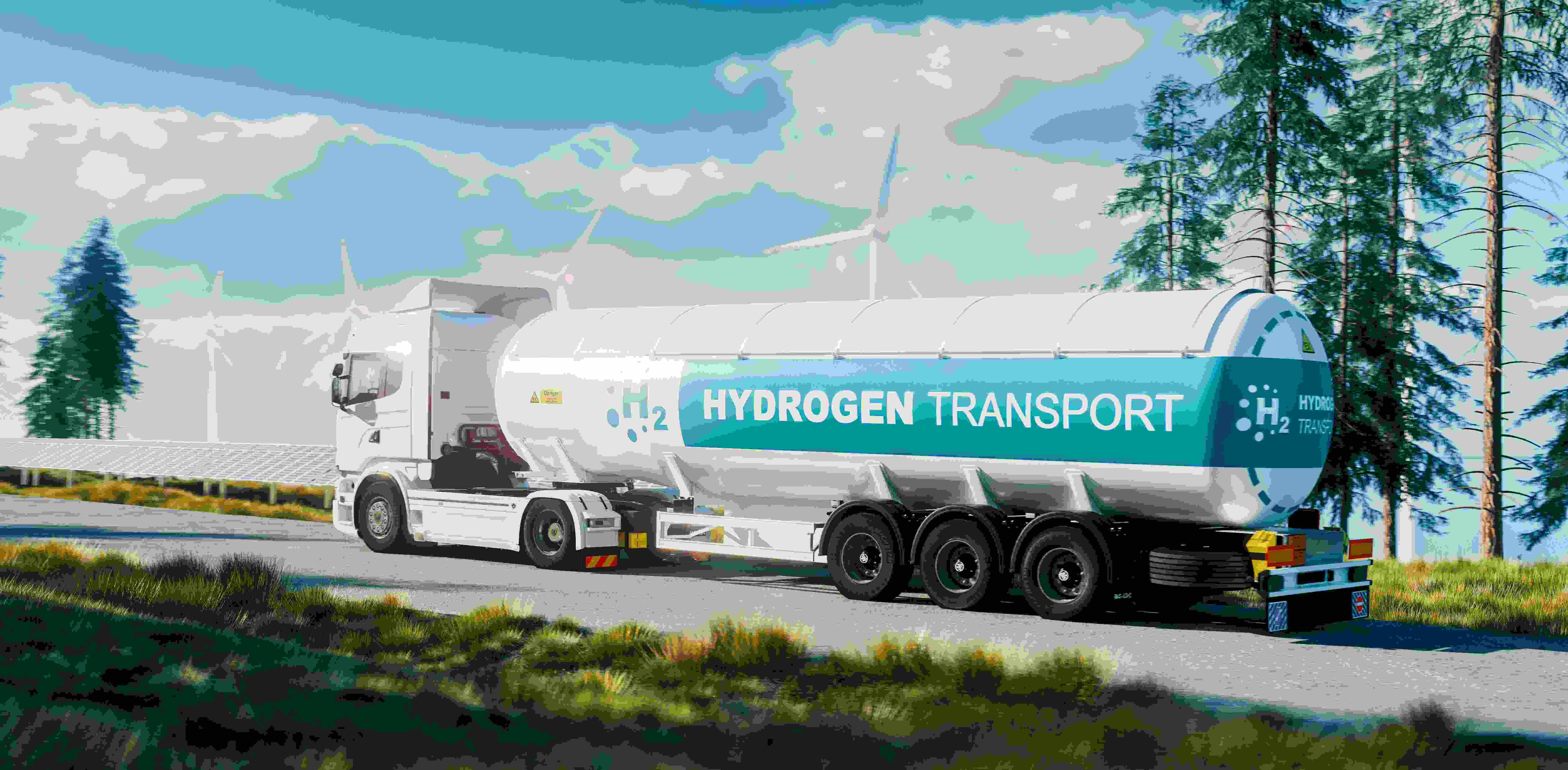
Stationary fuel cells
Stationary fuel cells are an energy-efficient solution for generating back-up electricity, supplying off-grid power and grid resilience when the electricity network goes down. Off-grid fuel cell power is a valuable energy source for remote locations and standalone power in urban areas. It is estimated that over 1 billion people currently do not have access to electricity, mainly in Africa, India and other parts of developing Asia. The main stationary fuel cell technologies are PEMFC, SOFC, MCFC and PAFC.
Hydrogen facilitates renewable power generation on-demand via hydrogen fuel cells without emitting toxic emissions (COx, SOx, NOx), particulates or noise; or by hydrogen gas turbines without emitting COx, SOx or particulates.
Hydrogen consulting solutions
Explore SFA (Oxford)'s available hydrogen economy and green hydrogen services for clients.

How can we help you?
SFA (Oxford) provides bespoke, independent intelligence on the strategic metal markets, specifically tailored to your needs. To find out more about what we can offer you, please contact us.



